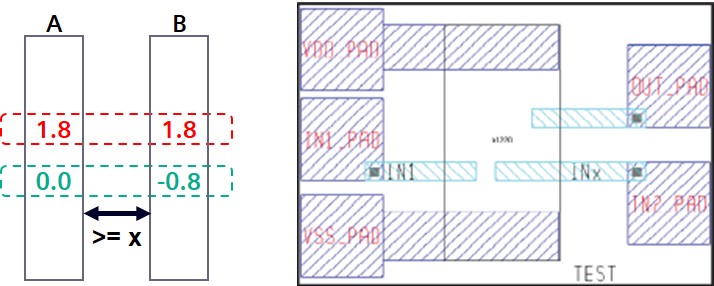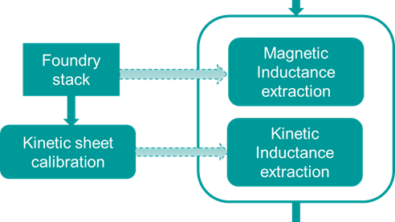DRC voltage text annotations: Manually placed texts can be wrong!

By Abdellah Bakhali
System-on-chip (SoC) designs often use multiple intellectual property (IP) blocks from multiple IP providers. Each IP provider typically uses its own methodology for voltage text creation. When running the final DRC, some IP voltage texts may be incompatible, which can generate many false violations. For example, two IP may be connected to the same power net, but they may each have different voltage definitions. One net cannot have multiple texts with different voltage values. When full-chip DRC is run, one of those IP will return false errors. And we all know verification engineers hate false violations…
The Calibre PERC automated text annotation process can not only generate text annotations, but also check existing manual text annotations for errors and conflicts to help ensure design coherence. Correcting these text annotations before tapeout is essential, since it’s impossible to trace all voltage texts that exist in the design layout when running signoff DRC, as multiple texts may exist at different levels of hierarchy in different IP.
When a net is already annotated with voltage information, engineers must ensure this information is unique and accurate. The Calibre PERC packaged checks provides two pre-coded text annotation check processes:
- finding and reporting any text “collisions” (multiple text annotations with different values) before voltage propagation is run
- comparing text annotations with voltage propagation results to identify any discrepancies
The text collision check reviews all existing text annotations in the design. If multiple text annotations with different values are found on the same net, a text collision is reported. All information needed to enable engineers to easily identify and resolve these text collisions is reported.

As shown in figure 2, the text collision check found 798 text annotations for 1.8V, and one conflicting text annotation for 3.3V, all for net 28 in layer M1_B. With this information, engineers can easily highlight the 3.3V text annotation and remove it from the database.

Accurate and repeatable reliability verification is now a critical component of design verification and optimization for both advanced node designs and the increasingly complex products being produced at established nodes. Voltage aware DRC accuracy is needed to achieve the high reliability and high yield that contribute to market success. To learn more about the full Calibre PERC automated text annotation process, , and how you can use it to improve your voltage-aware DRC results, read or download a copy of our technical paper, Automated DRC voltage annotation provides faster and more accurate verification for voltage-aware spacing rules


